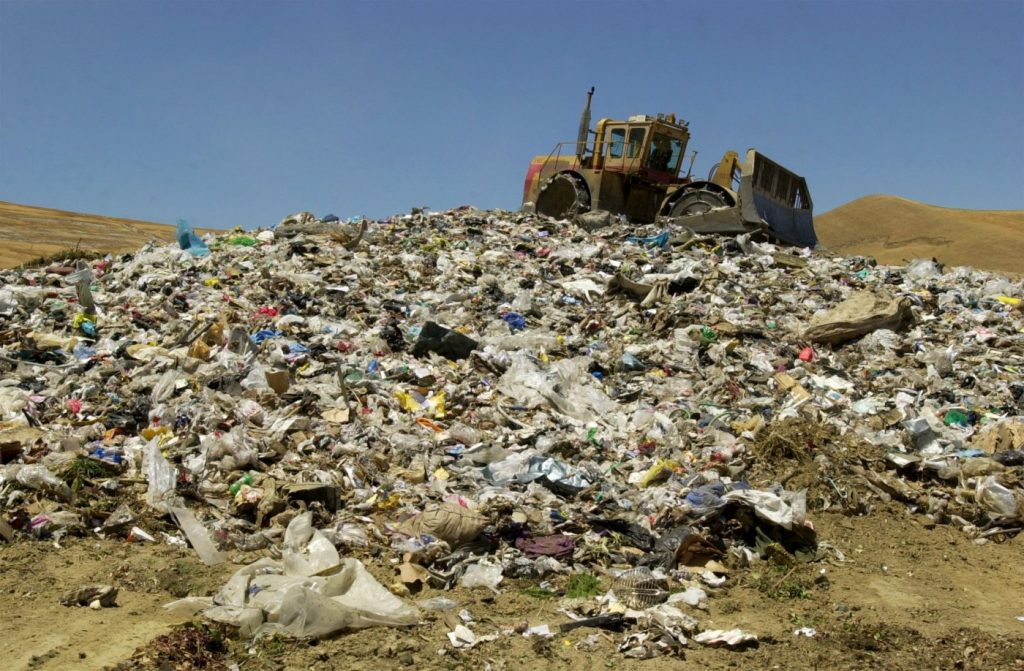Brentwood has taken a first step in developing an estimated $90 million facility to manage its organic waste and convert its food scraps into renewable energy.
The council on Tuesday, with little discussion, unanimously approved a nearly $1.17 million contract for a multi-phase project with Fresno-based W. M. Lyles Co. to design a organics-diversion plant as part of the city’s efforts to meet state mandates and fight climate change. The construction company would also build the facility, which will be an extension of the city’s current solid waste transfer station on Elkins Way.
Organic waste accounts for more than a third of the material in California’s waste, and reducing it and the harmful methane gas it emits at landfills is one easy way to address climate pollution, according to the California Department of Resources Recycling and Recovery.
To that effort, the state has targeted a 75% reduction in organic waste disposal by 2025. And, in 2022, with the passage of Senate Bill 1383, the state began requiring every city and county to provide organic waste collection services to residents and businesses. That could be done by providing bins and making residents separate their own waste, which most cities have done, or by using specialized machinery to mechanically separate and process the food scraps and yard waste. Brentwood, which operates its own garbage services, chose the latter.
“I really think that this is an opportunity that has such potential to have a positive impact on the operations of this city,” Mayor Joel Bryant said before voting for the new organics diversion facility. “I’m really excited for the opportunity to investigate what this means.”
The city of Brentwood began studying how it could reduce its organic waste several years ago, partnering with Carlsbad-based Anaergia in November of 2022 to determine whether a food waste diversion and energy recovery plant would work here. Currently, all the city’s garbage and its wastewater biosolids — the organic matter left over after sewage treatment — are being hauled away and disposed of at various landfills.
Results of the study were presented at a special council workshop earlier this month during which Public Works Director Casey Wichert suggested that the most cost-effective method for the city to reduce organic wastes would be to mechanically separate them from other garbage and sell the renewable energy produced in the process. Anaergia operates similar systems at San Carlos’ South Bayside Waste Management Authority and in several other cities in Southern California.
“The problem with (resident) source separation — why we don’t like it — is it places a burden for compliance on the residents and this isn’t their area of expertise by any means,” Wichert said.
The public works director added that the city would have to hire employees just to educate residents on which bin to put their pizza box in or where to dispose of wood.
Other cities that do not operate their own garbage collection service have been forced to provide additional garbage bins and collection routes, initiate education and enforcement measures, and pay higher transportation and disposal fees to dispose of organic food and yard waste at composting plants. And these measures can all add up to rate increases, according to Wichert.
“The hauling and disposal costs alone will increase about 30% and will go up about a million dollars a year and that is solely because it costs more to take things to compost facilities than it does landfills,” he said.
But if the city combines all of its organic waste with wastewater biosolids in a process called “digestion” — squeezing out the organics with a high-pressure “garbage juicer” — it can then be processed and converted into renewable energy. That energy would then be injected directly into PG&E’s natural gas pipeline system, according to the Brentwood plan.
Though the exact costs and funding sources have yet to be identified, the city says it will seek financing through bonds, grants or tax credits. It would take about 12 years to see a return on the city’s investment, Wichert said. But immediately the city would see operational costs in trucking and disposal fees reduced by about a million annually and the renewable energy produced would bring in about $5.6 million in revenue, according to the staff report.
On Tuesday Wichert estimated the first phase of the project, the design, will take about six to eight months to complete. By then, a more complete cost, bond financing picture and construction timeline would be available, he said.


